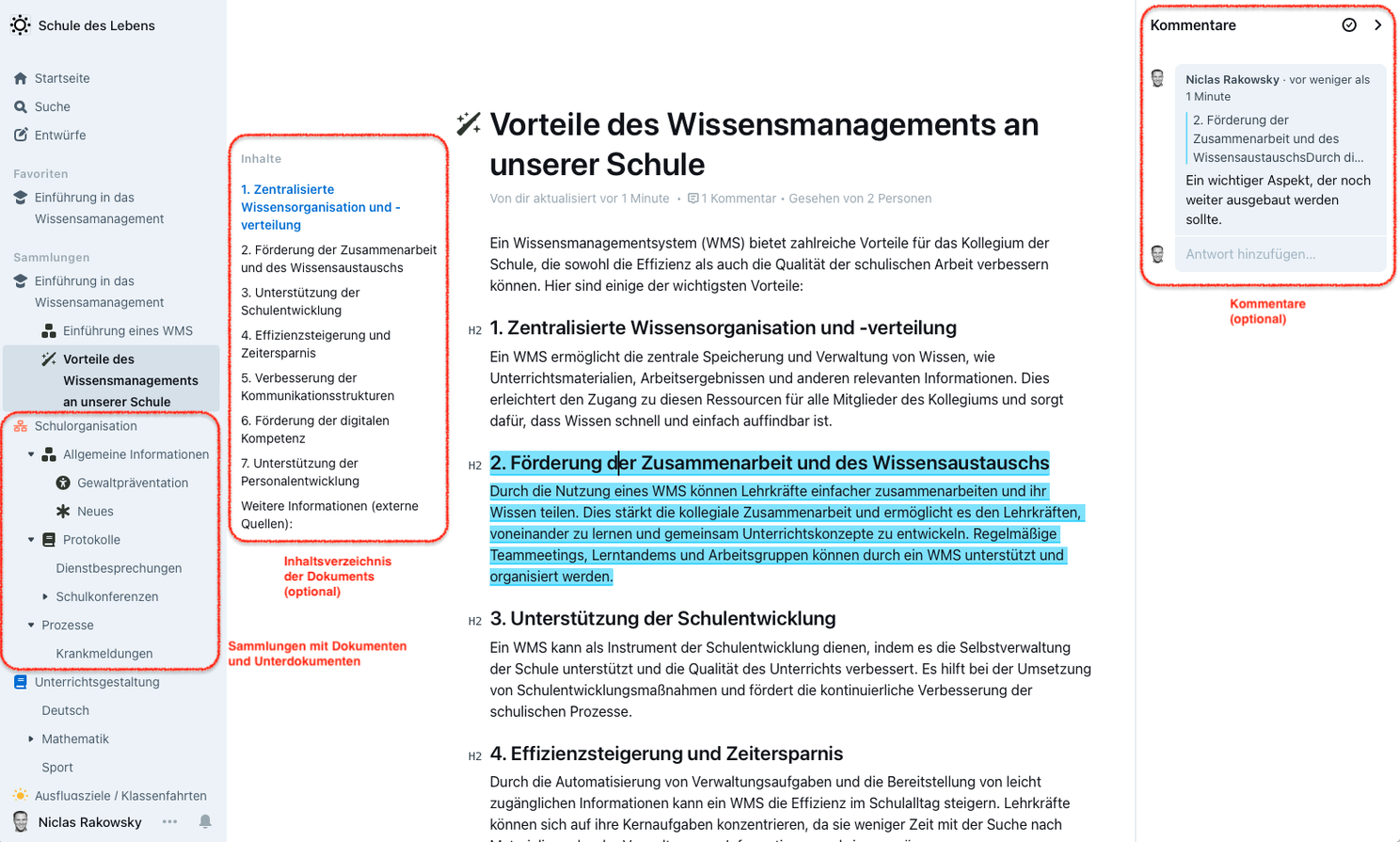This post is also available in:
Deutsch
In an increasingly digitalized world, effective knowledge management is a decisive factor for modern schools. A knowledge management system (WMS) offers teaching and administrative staff as well as pedagogical staff the opportunity to store and retrieve knowledge centrally, promote collaboration and thus have more time in everyday school life for the important tasks of teaching, individual support and school administration. Here I will briefly and concisely highlight some of the advantages of using a knowledge management system in schools, provide insights into its introduction and show how it can be used to strengthen school development and digital competence.
Why knowledge management?
A knowledge management system enables the central storage and administration of teaching materials, work results and other important information such as pedagogical guidelines, instructions and process descriptions. For example, worksheets for math lessons, once created, could be stored in such a way that all teachers in the department can access them. When preparing new timetables or class trips, the knowledge management system facilitates collaboration through shared planning documents and reports as well as the results of previous projects.
In addition, a knowledge management system supports school development: it promotes self-administration and contributes to quality assurance. In one school, for example, a working group on inclusion could centrally document the concepts and experience reports they have created. This means that valuable knowledge is retained even after personnel changes and can be developed further.
The recording and long-term storage of the results of study days is simplified, as minutes, materials and concepts developed can be stored centrally and made accessible to the entire teaching staff at any time.
More efficiency and digital expertise
A well-implemented WMS saves time and increases efficiency. For example, teachers could enter keywords such as “climate lessons” or “support material for geometry in year 4” to directly access suitable teaching materials instead of having to search for scattered files. At the same time, the use of a knowledge management system promotes the digital competence of the teaching staff: In an internal school workshop, teachers could learn how to use digital platforms to integrate content directly into the knowledge management system. This expands the digital skills of the teaching staff.
Successful introduction of a knowledge management system
The implementation of a knowledge management system requires careful planning and the willingness of the college to get involved. A needs analysis helps to define the school’s requirements. For example, a school may find that the majority of teachers would like to have access to a central collection of materials for lesson planning. With the introduction, the focus can then be extended to areas such as process documentation and knowledge processing. User-friendly web-based systems make it easy to get started and promote acceptance. A clear structure with categories such as “Teaching materials”, “Projects” and “School administration” provides an overview and makes it easier to get started.
Comprehensive training that covers technical and practical aspects is important. For example, an introductory training course could show teachers how to collaboratively take minutes in a subject council meeting or how to document teaching projects. In a pilot phase, the system can initially be tested by a smaller group, such as the school management and administrative staff and a group of “power users” from the teaching staff. Feedback from this phase helps to optimize the system for widespread use. A shift towards an open culture of knowledge sharing is the key to successful implementation and should be actively promoted by school management.
Knowledge management in schools
A knowledge management system is more than just a technical solution – it is a tool for promoting collaboration, efficiency and digital competence. For example, a school can use a knowledge management system to simplify the planning and documentation of project weeks by making all materials, schedules and results available in one central location. Another school can start to manage support plans and observation sheets digitally so that all teachers involved always have access to the latest documents and templates. These practical applications show how a knowledge management system not only makes everyday work easier, but also promotes the quality and sustainability of school work.

Ideas and instructions for using the open source tool “Outline” as a knowledge management system in schools can be found here.